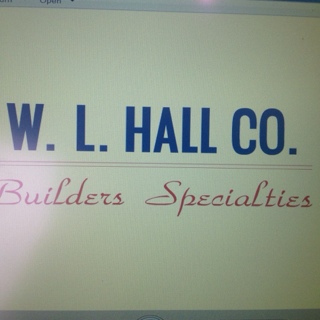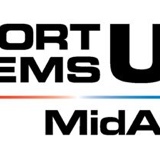Title Page
-
JOBSITE:
-
DATE:
-
SUPERINTENDENT:
-
FOREMAN:
-
AUDITOR:
JOBSITE SAFETY INSPECTION
Employee Protection: Eye and Face Protection - Construction
-
Is eye and face protective equipment used when machines or operations present potential eye or face injury?
Fire Prevention - Construction
-
Is smoking prohibited at or in the vicinity of operations which constitute a fire hazard, and is “No Smoking or Open Flame” conspicuously posted?
-
Is portable fire extinguishing equipment, suitable for the fire hazards involved, provided at convenient conspicuously accessible locations in the yard area?
-
Are portable fire extinguishers, rated not less than 2A, placed so that maximum travel distance to the nearest unit does not exceed 100 feet?
-
The dispensing units shall be protected against collision damage. 1926.152(e)(4)
Portable Fire Extinguishers
-
Are all fire extinguishers inspected and recharged regularly, and noted on the inspection tag?
-
Are appropriate fire extinguishers mounted, located, and identified so that they are readily accessible to employees?
-
Are portable fire extinguishers provided in adequate number and type?
Employee Protection: Head Protection - Construction
-
Are your employees protected by hard hats while working in areas where there is a possible danger of head injury from impact, falling or flying objects, or electrical shock and burns?
-
Do the hard hats you provide to your employees to protect against falling and flying objects meet the specifications contained in ANSI Z89.1-1969, Safety Requirements for Industrial Head Protection?
Employee Protection: Hearing Protection - Construction
-
Are ear protection devices provided and used when it is not feasible to reduce noise levels or duration of exposures to those specified in Table D-2, Permissible Exposure, in 29 CFR 1926.52?
-
Are ear protection devices that are inserted in the ear fitted or determined individually by competent persons?
Employee Protection: Working in Excavations - Construction
-
Are employees protected from loose material that could fall into the trench?
-
Are walkways provided when employees or equipment are required to cross over excavations?
-
Are walkways that are six feet or more above lower levels of excavations equipped with guardrails?
-
Are employees provided with and are they required to wear proper safety equipment?
-
If a hazardous atmosphere is identified, is ventilation provided or is respiratory protection in use?
-
Have hazardous objects been removed from the excavation area or blocked securely?
-
Are damaged materials or equipment removed from service?
-
Is excavated material stored at least two feet from the edge of the excavation?
-
Is the location of the trench marked by banners, barricades, or other signals?
Equipment - Construction
-
Is heavy machinery, equipment, or parts thereof, which are suspended or held aloft by slings, hoists, or jacks, substantially blocked or cribbed to prevent falling or shifting before employees are permitted to work under or between them?
-
Are bulldozer and scraper blades, end-loader buckets, dump bodies, or similar equipment fully lowered or blocked when being repaired or when not in use?
-
When work is being done on equipment are controls in the neutral position, motors stopped, and brakes set when the work does not require otherwise?
-
Is the parking brake set on parked equipment?
-
Does equipment cab glass have no visible distortion affecting the safe operation of the machine?
Excavations: Employee Protection - Construction
-
Daily inspections of excavations, the adjacent areas, and protective systems shall be made by a competent person for evidence of a situation that could result in possible cave-ins, indications of failure of protective systems, hazardous atmospheres, or other hazardous conditions. An inspection shall be conducted by the competent person prior to the start of work. 1926.251(k)(1)
-
Are all surface hazards removed or supported, as necessary, to safeguard employees?
-
Do you provide warning vests or other suitable garments, marked with or made of reflectorized or high-visibility material, to employees exposed to public vehicular traffic?
-
Are employees prohibited to be underneath loads handled by lifting or digging equipment?
-
Are employees required to stand away from any vehicle being loaded or unloaded to avoid being struck by any spillage or falling materials?
-
If employees are working in excavations where there is accumulated or accumulating water, are adequate precautions taken to protect them against the hazards posed by water accumulation?
-
Is adequate protection provided to protect employees from loose rock or soil that could pose a hazard by falling or rolling from an excavation face?
-
Are employees protected from excavated or other materials or equipment that could pose a hazard by falling or rolling into excavations?
-
Is each employee in an excavation protected from cave-ins by an adequate protective system designed in accordance with 1926.652(b) and (c)?
-
Do you prohibit excavation below the level of the base or footing of any foundation or retaining wall that could be reasonably expected to pose a hazard to employees?
-
If sidewalks, pavements, or appurtenant structures have been undermined, is a support system or another method provided to protect employees from the possible collapse of such structures?
-
Do you provide protection by placing and keeping excavated or other materials or equipment at least 2 feet from the edge of excavations, or by the use of retaining devices, or by a combination of both if necessary?
-
Are employees prohibited to work on the faces of sloped or benched excavations at levels above other employees, if employees at the lower levels are not adequately protected from the hazard of falling, rolling, or sliding material or equipment?
-
Are employees protected from the hazard of cave-ins when entering or exiting the area protected by shields?
-
Do you prohibit employees from being in shields when the shields are being installed, removed, or moved vertically?
Excavations: Requirements for Protective Systems - Construction
-
Are materials and equipment used for protective systems free from damage or defects that might impair their proper function?
-
Are manufactured materials and equipment used for protective systems maintained in a manner that is consistent with the recommendations of the manufacturer?
-
Are manufactured materials and equipment used for protective systems used in a manner that prevent employee exposure to hazards?
-
When material or equipment that is used for protective systems is damaged, does a competent person examine the material or equipment and evaluate its suitability for continued use?
-
If a competent person can not assure that the material or equipment used for protective systems is able to support the intended loads or is otherwise suitable for safe use, is the material or equipment removed from service?
-
Are members of support systems securely connected together to prevent sliding, falling, kickouts, or other predictable failure?
-
Are support systems installed and removed in a manner that protects employees from cave-ins, structural collapses, or from being struck by members of the support system?
-
Do you make certain that individual members of support systems are not subjected to loads exceeding those which those members are designed to withstand?
-
Does backfilling progress together with the removal of support systems from excavations?
-
Are members of the support system closely coordinated with the excavation of trenches?
-
Do you make certain that shield systems are not subjected to loads exceeding those which the system is designed to withstand?
-
Are shields installed in a manner to restrict lateral or other hazardous movement of the shield in the event of the application of sudden lateral loads?
-
Is excavation of material to a level no greater than 2 feet below the bottom of a shield system prohibited if there are indications while the trench is open of a possible loss of soil from behind or below the bottom of the shield system?
Hand Tools - Construction
-
Do you only issue safe hand tools?
-
Are impact tools free of mushroomed heads?
-
Are wooden handles of tools free of splinters or cracks, and tight in the tool?
-
Are the noncurrent-carrying metal parts of electrical power operated hand tools grounded or of the approved double-insulated type?
Rigging - Construction
-
Rigging equipment for material handling shall be inspected prior to use on each shift and as necessary during its use to ensure that it is safe. Defective rigging equipment shall be removed from service. 1926.251(a)(1)
-
Does the rigging material have permanently affixed and legible identification markings as prescribed by the manufacturer that indicate the recommended safe working load? 1926.(a)(2)(ii)
-
Not be loaded in excess of its recommended safe working load as prescribed on the identification markings by the manufacturer. 1926.251(a)(2)(ii)
-
Not be used without affixed, legible identification markings, required by paragraph (a)(2)(i)
-
Sling shall not be pulled from under a load when the load is resting on the sling. 1926.251(c)(12)
Ladders: Inspections - Construction
-
Are ladders inspected periodically by your competent person for visible defects, and after an occurrence that could affect their safe use?
-
Are portable ladders with structural defects immediately marked in a manner that readily identifies them as defective, or tagged with "Do Not Use" or similar language, and withdrawn from service until repaired?
-
Are fixed ladders with structural defects withdrawn from service until repaired?
Sign-off
-
Audit Completed By:












